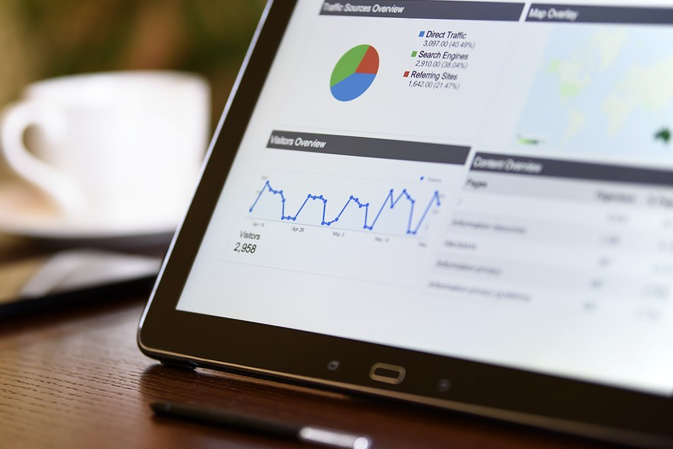In the e-commerce industry, how should we make a business data report so that the data can play its actual business significance, rather than just staying on the surface of the data? The following will briefly analyze from three aspects: what is a business data report, common thinking of business data report, and steps for writing business data report.

1. What is a business data report
Business reports are business personnel who collect and analyze a large amount of data, combine their own understanding of the business, explain the advantages and shortcomings of the existing business, and put forward reasonable optimization suggestions for the business, in order to guide the healthy development of the business. Business reports are different from simple data reports. Business reports cannot simply list data, but more importantly, the following three points are needed:
Improvement and optimization of business;
Help the business discover opportunities;
Create new business value.
In the 1990s, when analyzing sales data by Walmart supermarket managers in the United States, they found that in some cases, two items that seem to have nothing to do with "beer" and "diaper" often appear in the same shopping basket. It turns out that when my husband is sent to the supermarket to buy children's diapers by his wife, he will also buy beer for himself. The mall simply put the two products together, which actually increased sales.
The above example shows that a certain pattern was discovered from daily data, and made reasonable speculations on consumers' life and shopping habits, put forward business optimization suggestions and successfully achieved business growth. Back to e-commerce operations, from small stores to large platforms, it is the same thing; stores can analyze which products are more likely to appear in an order, and then recommend and divert these products to each other, and display them close to the store page, etc .; the platform can analyze which categories have stronger unity. If women's clothing and women's shoes, home furniture and household appliances have stronger unity, you can consider combining the two categories to plan activities together. If the product side allows it, they can also plan marketing for full discounts and full items to deepen the connection and improve performance.
Calculation formula: Women's clothing and women's shoes are both single-sex = the number of users who have purchased both women's clothing and women's shoes/the number of users who have purchased women's clothing.
2. Common thinking about business data reporting
The above are definitions and simple examples of business data reports. So from what perspective can we mine business data and optimize existing businesses? Below are four common data analysis ideas.
1. Comparison
Comparative analysis is to put the data in a reasonable reference system and explain the problem through comparison.
A business includes indicators such as total sales, UV, conversion rate, etc. These indicators can explain the progress of the business to a certain extent, but the individual indicators are too one-sided and lack practical guiding significance. For example, the click rate of an e-commerce banner advertising chart is 5% on a certain day. We cannot immediately determine whether the copywriting, traffic, color, style, etc. of this advertising chart are successful. However, if we can compare it with the advertising chart at the same location and other times, we can find more problems. In addition, the dimensions that can be compared include gender, age, region, province , etc. Taking the example of regions, we can count the order proportion of dresses in different regions (North China, Central China, South China, West China, East China), and thus draw the conclusion that dresses are more popular in XX region (especially during season change seasons), and then return to the business to adjust the exposure of dresses among users in different regions , so that traffic can be used more effectively and improve performance. Another one that applies to the comparison thinking is A/B test . For example, when testing the effect of product revision, you can evenly divide the user quality into two groups to experience the unrevised and the revision respectively, and judge whether the product revision is successful through data feedback from the two groups of users.
2. Conversion
Business is achieved through layer by layer. When we do business analysis, we must first sort out the entire business process, list each link clearly, and then calculate and analyze the conversion rate of each link, thinking about how to improve the conversion rate of each link.
Taking an e-commerce activity page as an example, the conversion process of this activity page should be:
Exposure UV → Click UV → (click UV in the store) → Profile UV → Number of orders → Number of people paying
After sorting out the above process, we need to calculate: exposure click-through rate, quotient arrival rate, order conversion rate, payment conversion rate, etc., and then compare the conversion rate of each link with the conversion rate of other activity pages, or compare the average daily conversion rate of the first three days of this activity page to see if the data is too high or low. If the exposure UV of a page is low, you can consider increasing traffic delivery outside the site and applying for more resources on the site . If the click-through rate is low, it may be because the copywriting is too weak, the advertising image is not attractive enough, or the resource itself is of poor quality .
If the profile delivery rate of a page is low, you should consider whether the page structure is appropriate, whether the product meets user preferences , etc. You can replace products with poor clicking effects in time based on data feedback . If the profile delivery rate shows a trend of gradually weakening over time, you should look for certain rules to change the product sort of page regularly . If the purchase conversion rate of the product is low, you should consider whether there is room for optimization on the trade details page , such as adding a promotion atmosphere picture below the main picture of the trade details page, adding a promotion description at the product information location, etc. There is also the payment rate of the product. If it is lower than the normal value, it is recommended that the seller urges the order .
Speaking of conversion, I have to mention the popular Douyin recently. The path of this app cannot be shorter. You can see videos by opening the app, and you don’t have to get stuck in the trouble of clicking and clicking to find what you want.
3. Formula
In addition to splitting the business according to the conversion process, the business can also split the indicators from the perspective of formulas. We all know that total sales = average customer price * number of users. So, if we want our performance to grow, we need to:
Attract more users;
Get more money from every user.
Taobao’s Juhuasuan, Pinduoduo’s group buying products , etc. are all ways to increase the number of users; they can increase the number of users by discounts, buy and get free, discounts for full items, and participate in the lottery after a certain amount . These are marketing methods that can increase the average customer price . The ultimate core business indicators can be achieved through reasonable splitting and breaking them separately.
4. Classification analysis
Classification analysis is a very important means. The common classification analysis idea in e-commerce is to split categories.
The total sales of the platform can be divided into the total sales of each first-level category, the first-level category is then divided into the second-level category, and the second-level category is then divided into the store. If you want to achieve a business goal, you can calculate the business goals that each category should undertake according to the daily output proportion of various types of the platform, and then calculate how many stores (or products) your business goal needs to be provided by each category to support the realization based on the average sales (can be increased) of the store (or products) . In this way, the goals will become clear and achieveable, and if the final result is biased, it is also convenient to analyze the reasons.
3. Steps for writing business data report 1. Analysis framework
To analyze a project, we must first understand the positioning and current situation of the business, and from which directions we expect to improve our performance. We must choose the business entry point to ensure that the report has a clear main line, and organize the business analysis framework on this basis.
2. Obtain data
According to the determined framework content of data analysis, relevant data are collected and integrated purposefully.
3. Clean the data
Processing and organizing the collected data to carry out data analysis is an indispensable stage before data analysis.
4. Analyze the data
Through analytical means, methods and techniques, the prepared data are explored and analyzed, and causal relationships, internal connections and business rules are discovered, providing decision-making reference for business purposes. The most important thing here is: always thinking about what your goal is? For example, to understand the trading situation in a certain period of time, you should do year-on-year, month-on-month based on this goal.
5. Data Report
Through the analysis report, the purpose, process, results and solutions of data analysis are presented in full for reference for commercial purposes.
6. Execution Feedback
Implement reasonable suggestions drawn from business analysis, and pay attention to data feedback and make strategic reviews.
4. Summary
The above is my thoughts on business data analysis in e-commerce operations. Data has great guiding significance for the business, but when data is lacking or data does not have sufficient reference value at this stage, we should also use our innovative thinking and not be afraid of one's head or make judgments.




![#Laogao E-commerce Newsletter# [May 25th E-commerce Morning News]](/update/1519779573l517616211.jpg)
![#Laogao E-commerce Newsletter#[June 8 E-commerce Evening News Brief]](/update/1652145126l900304477.jpg)

 EN
EN CN
CN
